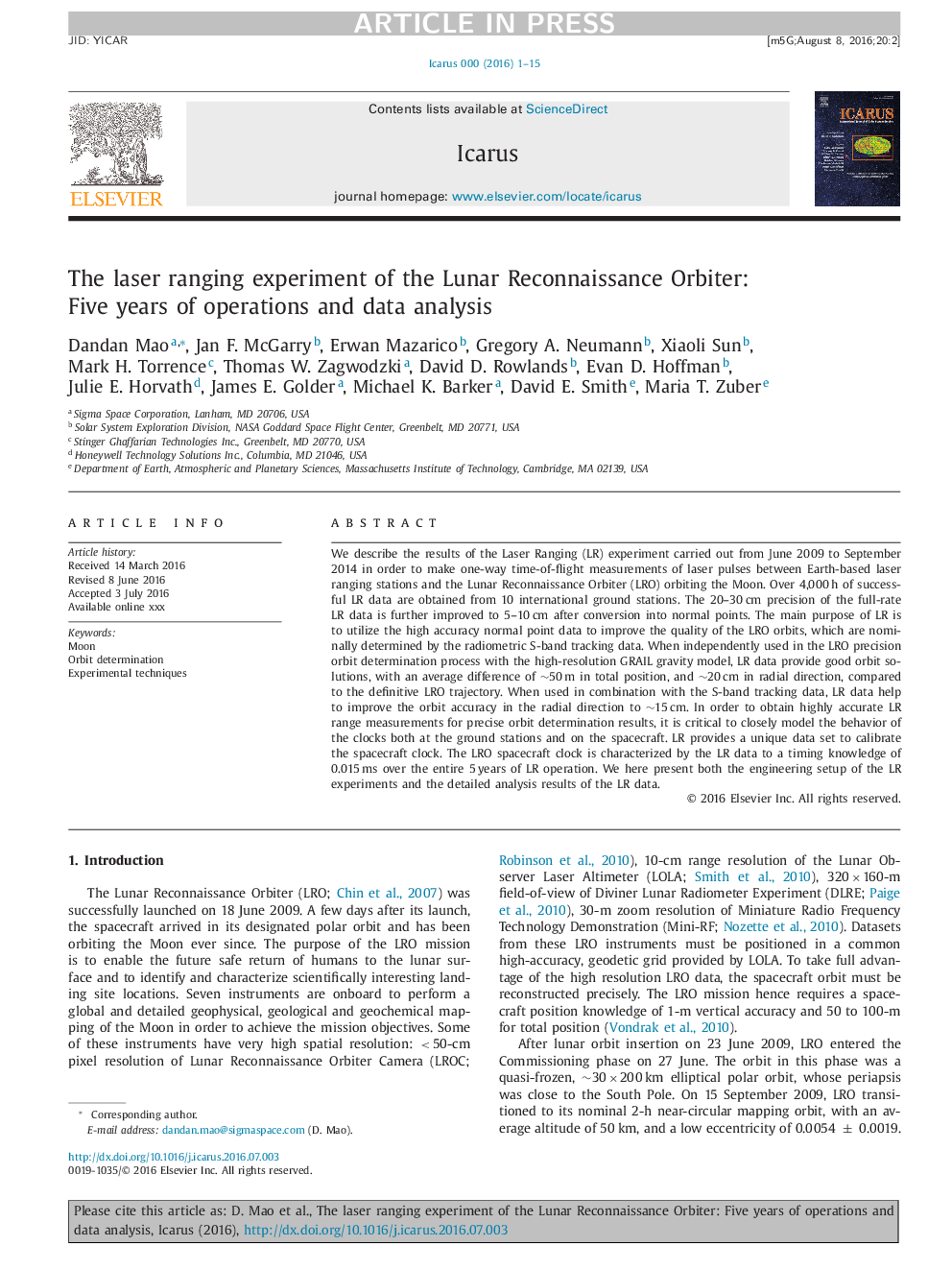| Article ID | Journal | Published Year | Pages | File Type |
|---|---|---|---|---|
| 5487255 | Icarus | 2017 | 15 Pages |
Abstract
We describe the results of the Laser Ranging (LR) experiment carried out from June 2009 to September 2014 in order to make one-way time-of-flight measurements of laser pulses between Earth-based laser ranging stations and the Lunar Reconnaissance Orbiter (LRO) orbiting the Moon. Over 4,000Â h of successful LR data are obtained from 10 international ground stations. The 20-30Â cm precision of the full-rate LR data is further improved to 5-10Â cm after conversion into normal points. The main purpose of LR is to utilize the high accuracy normal point data to improve the quality of the LRO orbits, which are nominally determined by the radiometric S-band tracking data. When independently used in the LRO precision orbit determination process with the high-resolution GRAIL gravity model, LR data provide good orbit solutions, with an average difference of â¼50Â m in total position, and â¼20Â cm in radial direction, compared to the definitive LRO trajectory. When used in combination with the S-band tracking data, LR data help to improve the orbit accuracy in the radial direction to â¼15Â cm. In order to obtain highly accurate LR range measurements for precise orbit determination results, it is critical to closely model the behavior of the clocks both at the ground stations and on the spacecraft. LR provides a unique data set to calibrate the spacecraft clock. The LRO spacecraft clock is characterized by the LR data to a timing knowledge of 0.015Â ms over the entire 5Â years of LR operation. We here present both the engineering setup of the LR experiments and the detailed analysis results of the LR data.
Related Topics
Physical Sciences and Engineering
Earth and Planetary Sciences
Space and Planetary Science
Authors
Dandan Mao, Jan F. McGarry, Erwan Mazarico, Gregory A. Neumann, Xiaoli Sun, Mark H. Torrence, Thomas W. Zagwodzki, David D. Rowlands, Evan D. Hoffman, Julie E. Horvath, James E. Golder, Michael K. Barker, David E. Smith, Maria T. Zuber,
